Modeling and Analysis of a Combined Stress-Vibration Fiber Bragg Grating Sensor
Abstract
:1. Introduction
2. The Designed Sensor
2.1. Sensor Design
2.2. Theoretical Analysis of FBG
2.3. Theoretical Analysis of Cantilever with Vibration
2.3.1. Theoretical Model
2.3.2. Theoretical Analysis
2.3.3. Finite Element Model
2.4. Theoretical Analysis of Measuring Object with Stress
2.4.1. Theoretical Model
2.4.2. Finite Element Model
3. Results and Discussion
3.1. Theoretical Analysis and FEM for Vibration Sensing
3.2. The Sensor Performance for Vibration Sensing
3.2.1. Measurement Linearity of the Sensor
3.2.2. Sensing Sensitivity
3.2.3. Sensitivity for Vibration Direction
3.3. The Result of Finite Element Simulation
3.4. The Sensor Performance for Measuring Stress
3.4.1. Measurement Linearity of the Sensor
3.4.2. Sensitivity for Stress Direction
4. Conclusions
Acknowledgments
Author Contributions
Conflicts of Interest
References
- Hameed, Z.; Hong, Y.S.; Cho, Y.M.; Ahn, S.H.; Song, C.K. Condition monitoring and fault detection of wind turbines and related algorithms: A review. Renew. Sustain. Energy Rev. 2009, 13, 1–39. [Google Scholar] [CrossRef]
- Guo, H.; Xiao, G.; Nezih, M.; Yao, J. Fiber Optic Sensors for Structural Health Monitoring of Air Platforms. Sensors 2011, 11, 3687–3705. [Google Scholar] [CrossRef] [PubMed]
- Yen, G.; Lin, K.C. Wavelet packet feature extraction for vibration monitoring. IEEE Trans. Ind. Electron. 1998, 47, 650–667. [Google Scholar] [CrossRef]
- Mckenzie, I.; Karafolas, N. Fiber optic sensing in space structures: The experience of the European Space Agency. Proc. SPIE 2005, 5855, 262–269. [Google Scholar] [CrossRef]
- Luyckx, G.; Voet, E.; Lammens, N.; Degrieck, J. Strain measurements of composite laminates with embedded fibre bragg gratings: Criticism and opportunities for research. Sensors 2011, 11, 384–408. [Google Scholar] [CrossRef] [PubMed] [Green Version]
- Degrieck, J.; De Waele, W.; Verleysen, P. Monitoring of fibre reinforced composites with embedded optical fibre Bragg sensors, with application to filament wound pressure vessels. NDT E Int. 2001, 34, 289–296. [Google Scholar] [CrossRef]
- De Baere, I.; Voet, E.; Van Paepegem, W.; Vlekken, J.; Cnudde, V.; Masschaele, B.; Degrieck, J. Strain monitoring in thermoplastic composites with optical fiber sensors: Embedding process, visualization with micro-tomography, and fatigue results. J. Thermoplast. Compos. Mater. 2007, 20, 453–472. [Google Scholar] [CrossRef]
- Degrieck, J.; Van Paepegem, W.; Cnudde, V.; De Baere, I.; De Baets, P.; Declercq, N.; Luyckx, G.; Masschaele, B.; Moentjens, A.; Quintelier, J.; et al. Monitoring of fatigue, impact and wear in Cetex TPC. In Cetex—Thermoplastic Composites. From Scratch to Flight. Proceedings of the First Cetex Conference, Delft, The Netherlands, 14 June 2006; Gent University: Gent, Belgium, 2006; pp. 51–61. [Google Scholar]
- De Oliveira, R.; Ramos, C.A.; Marques, A.T. Health monitoring of composite structures by embedded FBG and interferometric Fabry-Pérot sensors. Comput. Struct. 2008, 86, 340–346. [Google Scholar] [CrossRef]
- Zhou, C.; Tian, T.; Qian, L.; Fan, D.; Ling, W.; Ou, Y. Doppler Effect-Based Optical Fiber Vibration Sensor Using Frequency-Shifted Interferometry Demodulation. J. Lightw. Technol. 2017, 35, 3483–3488. [Google Scholar] [CrossRef]
- Au, H.Y.; Khijwania, S.K.; Tam, H.Y. Fiber Bragg grating based accelerometer. In Proceedings of the 19th International Conference on Optical Fibre Sensors, Perth, Australia, 14 April 2008; International Society for Optics and Photonics: Washington, DC, USA, 2008. [Google Scholar] [CrossRef]
- Khan, M.M.; Panwar, N.; Dhawan, R. Modified cantilever beam shaped FBG based accelerometer with self temperature compensation. Sens. Actuators A Phys. 2014, 205, 79–85. [Google Scholar] [CrossRef]
- Weng, Y.; Qiao, X.; Guo, T.; Hu, M.; Feng, Z.; Wang, R.; Zhang, J. A Robust and Compact Fiber Bragg Grating Vibration Sensor for Seismic Measurement. IEEE Sens. J. 2012, 12, 800–804. [Google Scholar] [CrossRef]
- Stefani, A.; Yuan, W.; Andresen, S.; Bang, O. Polymer optical fiber Bragg grating sensors: Measuring acceleration. In Proceedings of the 5th Australian Conference on Optical Fibre Technology, Melbourne, Australia, 5–9 December 2010; IEEE: Piscataway, NJ, USA, 2010. [Google Scholar]
- Stefani, A.; Andresen, S.; Yuan, W.; Rasmussen, N.H.; Bang, O. High Sensitivity Polymer Optical Fiber-Bragg-Grating-Based Accelerometer. IEEE Photonics Technol. Lett. 2012, 24, 763–765. [Google Scholar] [CrossRef]
- Xu, J.; Yang, D.; Qin, C.; Jiang, Y.; Sheng, L.; Jia, X.; Bai, Y.; Shen, X.; Wang, H.; Deng, X.; et al. Study and Test of a New Bundle-Structure Riser Stress Monitoring Sensor Based on FBG. Sensors 2015, 15, 29648–29660. [Google Scholar] [CrossRef] [PubMed]
- Pospori, A.; Marques, C.A.F.; Sáez-Rodríguez, D.; Nielsen, K.; Bang, O.; Webb, D.J. Thermal and chemical treatment of polymer optical fiber Bragg grating sensors for enhanced mechanical sensitivity. Opt. Fiber Technol. 2017, 36, 68–74. [Google Scholar] [CrossRef]
- Kalamkarov, A.L.; Fitzgerald, S.B.; MacDonald, D.O.; Georgiades, A.V. The mechanical performance of pultruded composite rods with embedded fiber-optic sensors. Compos. Sci. Technol. 2000, 60, 1161–1169. [Google Scholar] [CrossRef]
- Li, X.H.; Zhao, C.S.; Lin, J.; Yuan, S.F. The internal strain of three-dimensional braided composites with co-braided FBG sensors. Opt. Lasers Eng. 2007, 45, 819–826. [Google Scholar] [CrossRef]
- Yuan, S.F.; Huang, R.; Rao, Y.J. Internal strain measurement in 3D braided composites using co-braided optical fiber sensors. J. Mater. Sci. Technol. 2004, 20, 199–202. [Google Scholar]
- Jung, K.; Kang, T.J. Cure monitoring and internal strain measurement of 3-D hybrid braided composites using fiber Bragg grating sensor. J. Compos. Mater. 2007, 41, 1499–1519. [Google Scholar] [CrossRef]
- De Waele, W. Structural Monitoring of Composite Elements Using Optical Fibres with Bragg-Sensors. Ph.D. Thesis, Department of Mechanical Construction and Production, Ghent University, Ghent, Belgium, 2002. [Google Scholar]
- Guemes, J.A.; Menendez, J.M. Response of Bragg grating fiber-optic sensors when embedded in composite laminates. Compos. Sci. Technol. 2002, 62, 959–966. [Google Scholar] [CrossRef]
- Thomson, W.T. Theory of Vibration with Applications, 2nd ed.; Prentice-Hall, Inc.: Englewood Cliffs, NJ, USA, 1981; pp. 218–232. [Google Scholar]
- Lawrence, C.M.; Nelson, D.V.; Udd, E.; Bennett, T. A fiber optic sensor for transverse strain measurement. Exp. Mech. 1999, 39, 202–209. [Google Scholar] [CrossRef]
- Chiang, Y.J.; Wang, L.; Chen, H.S.; Yang, C.C.; Liu, W.F. Multipoint temperature-independent fiber-Bragg-grating strain-sensing system employing an optical-power-detection scheme. Appl. Opt. 2002, 41, 1661–1667. [Google Scholar] [CrossRef] [PubMed]
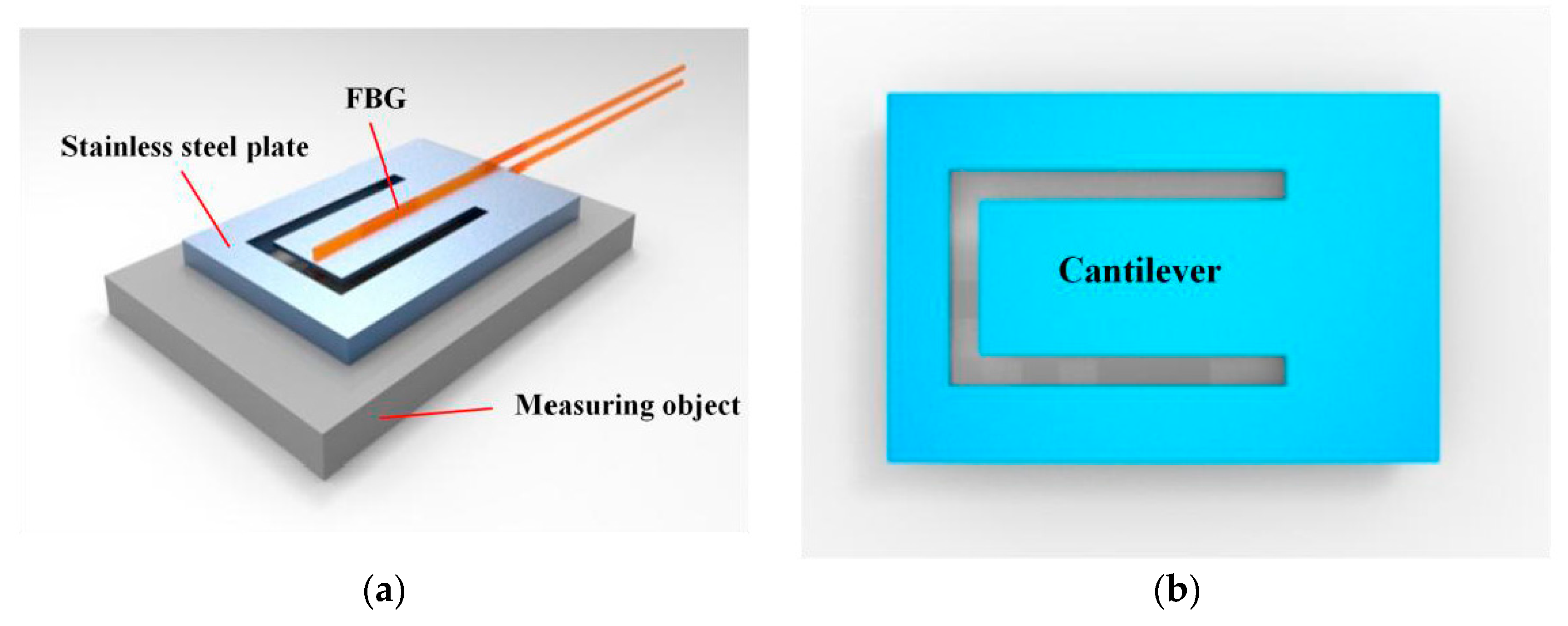
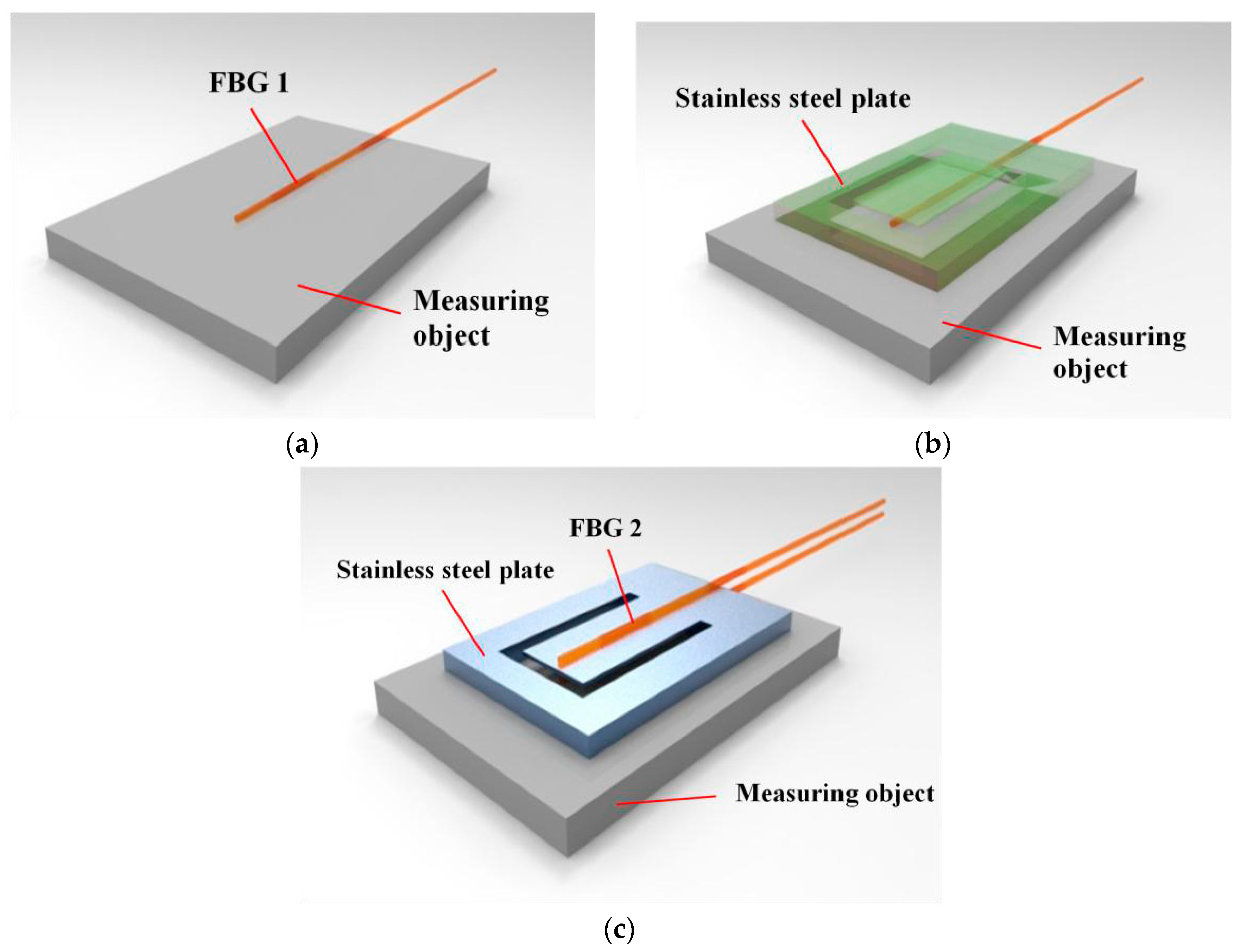
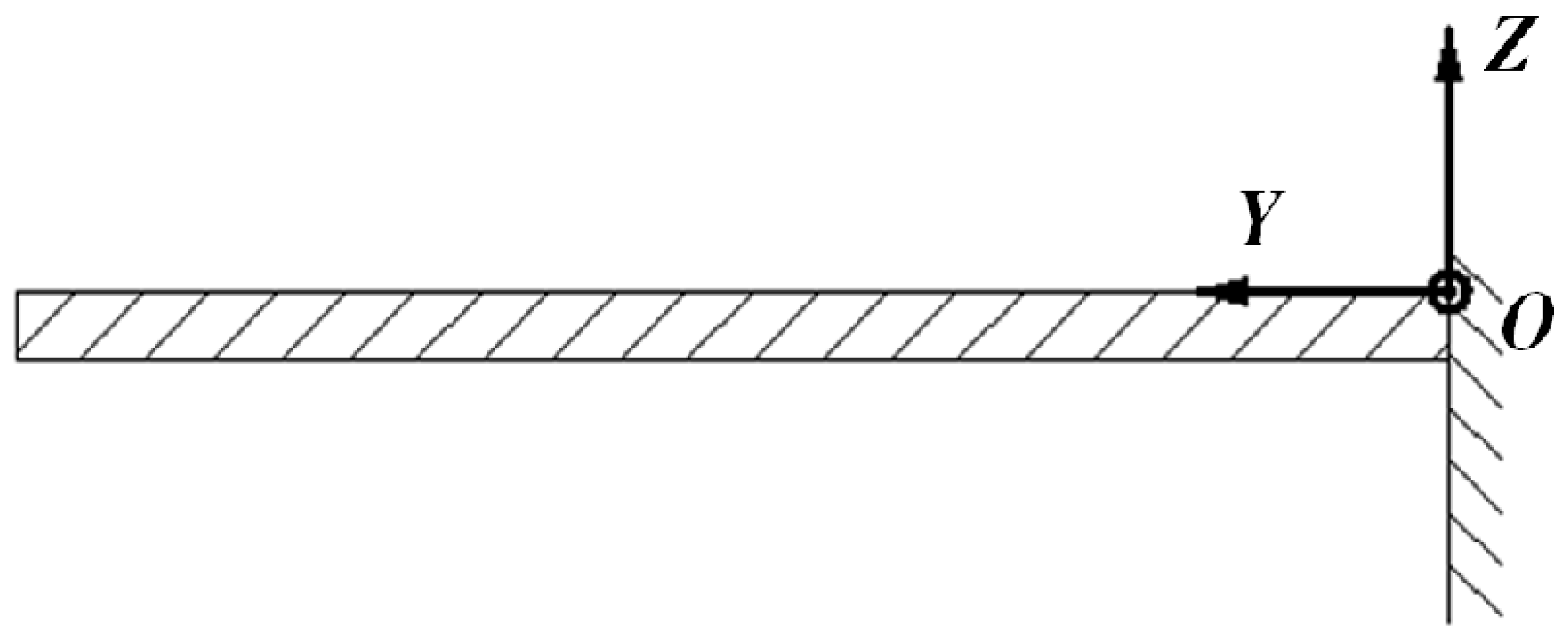
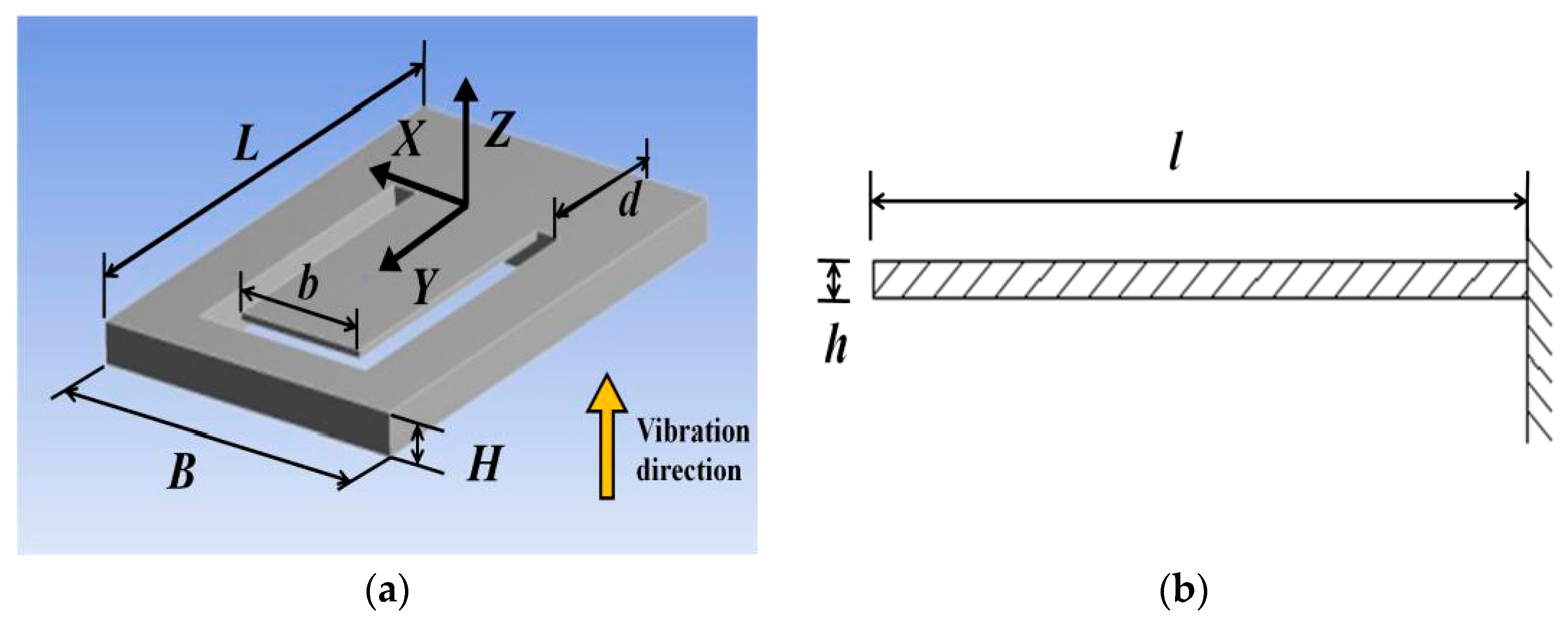
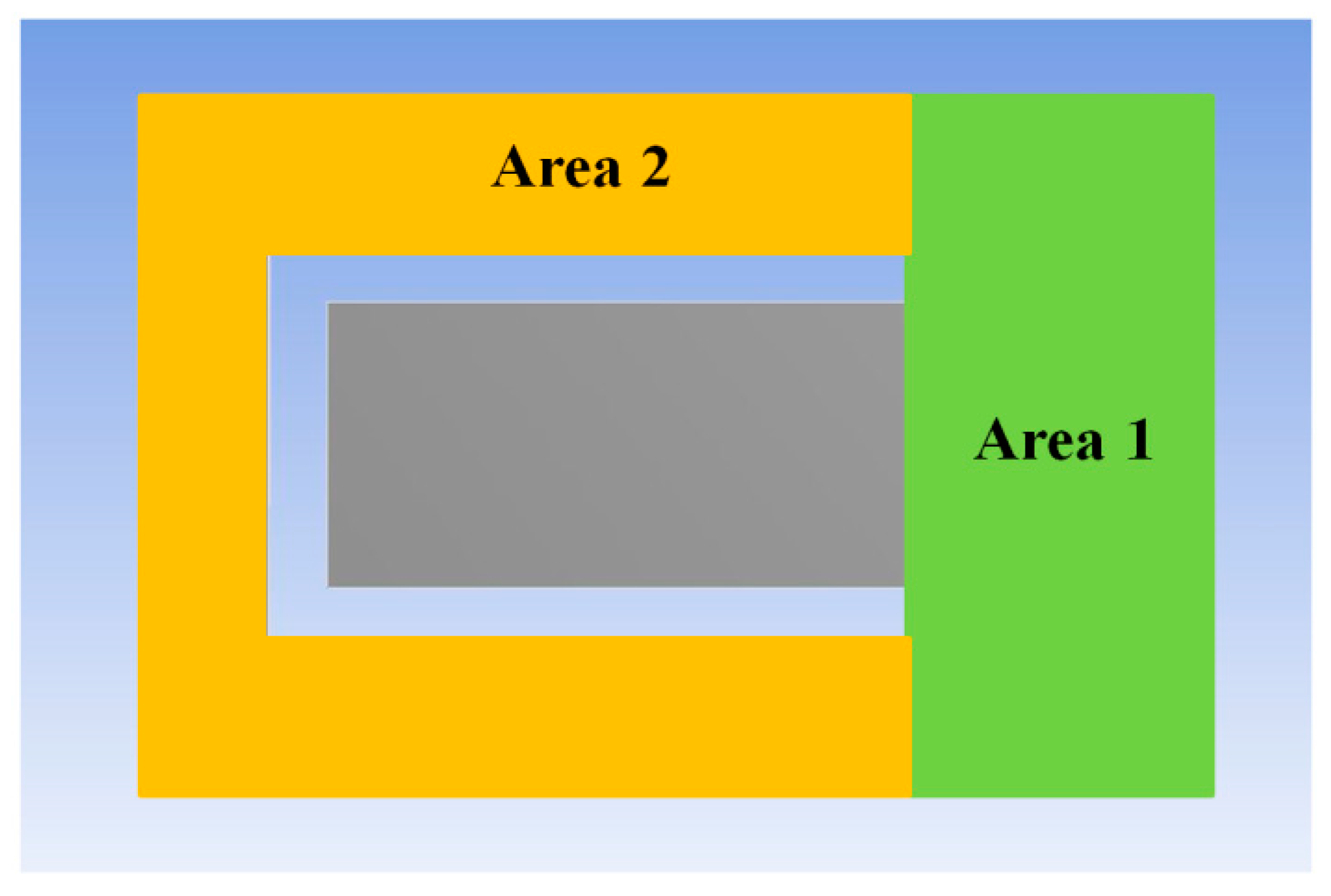
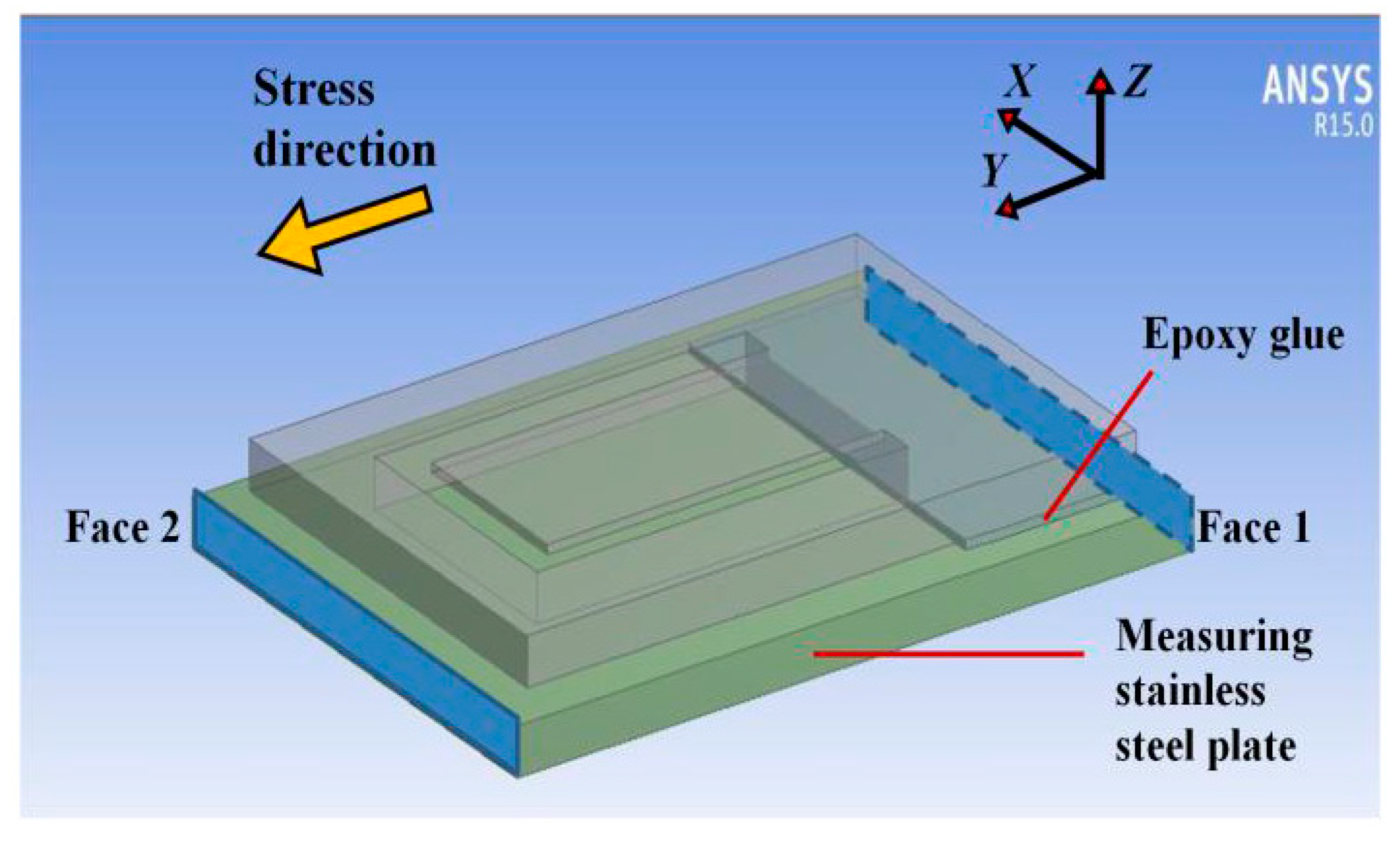
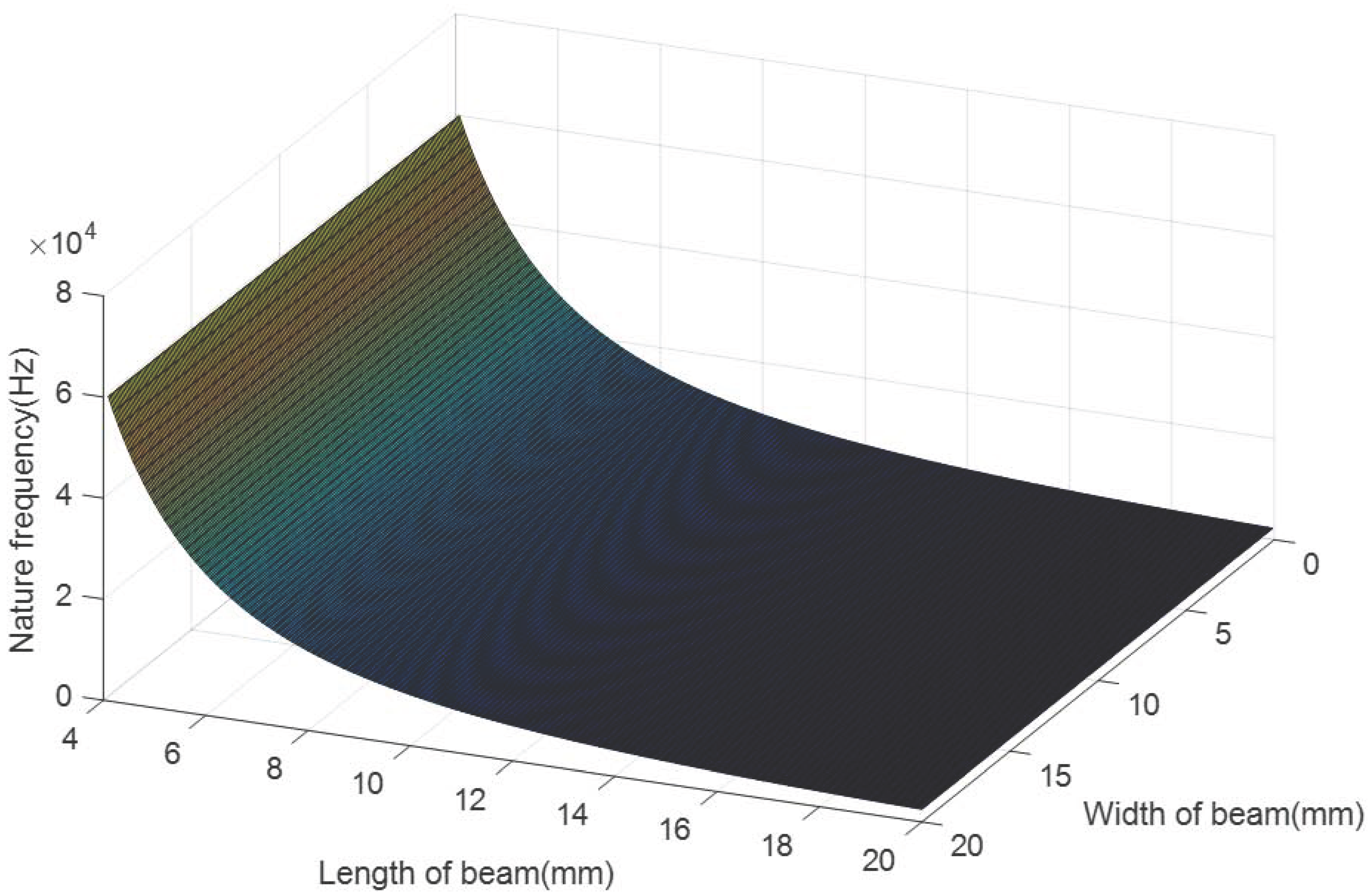
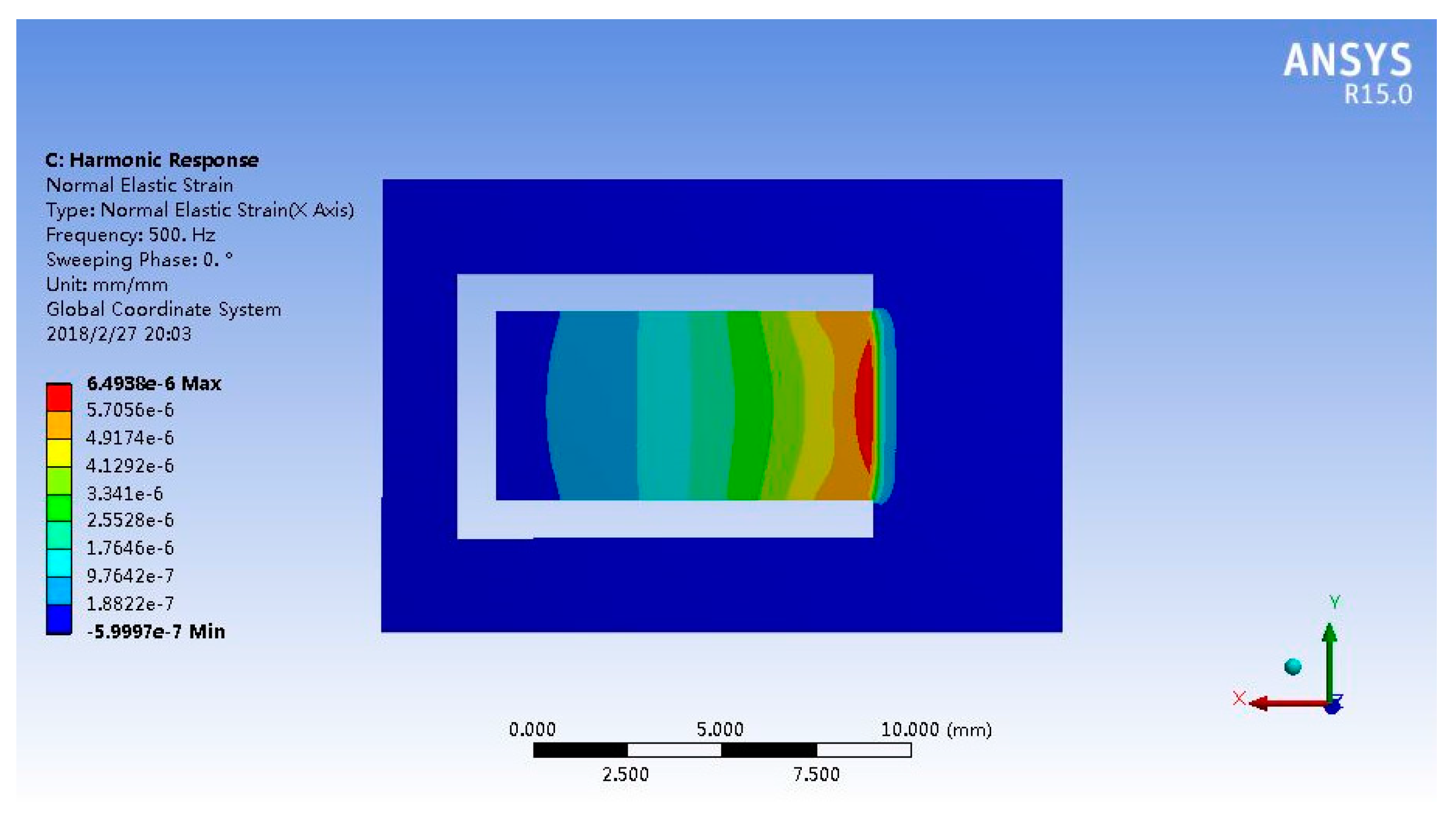
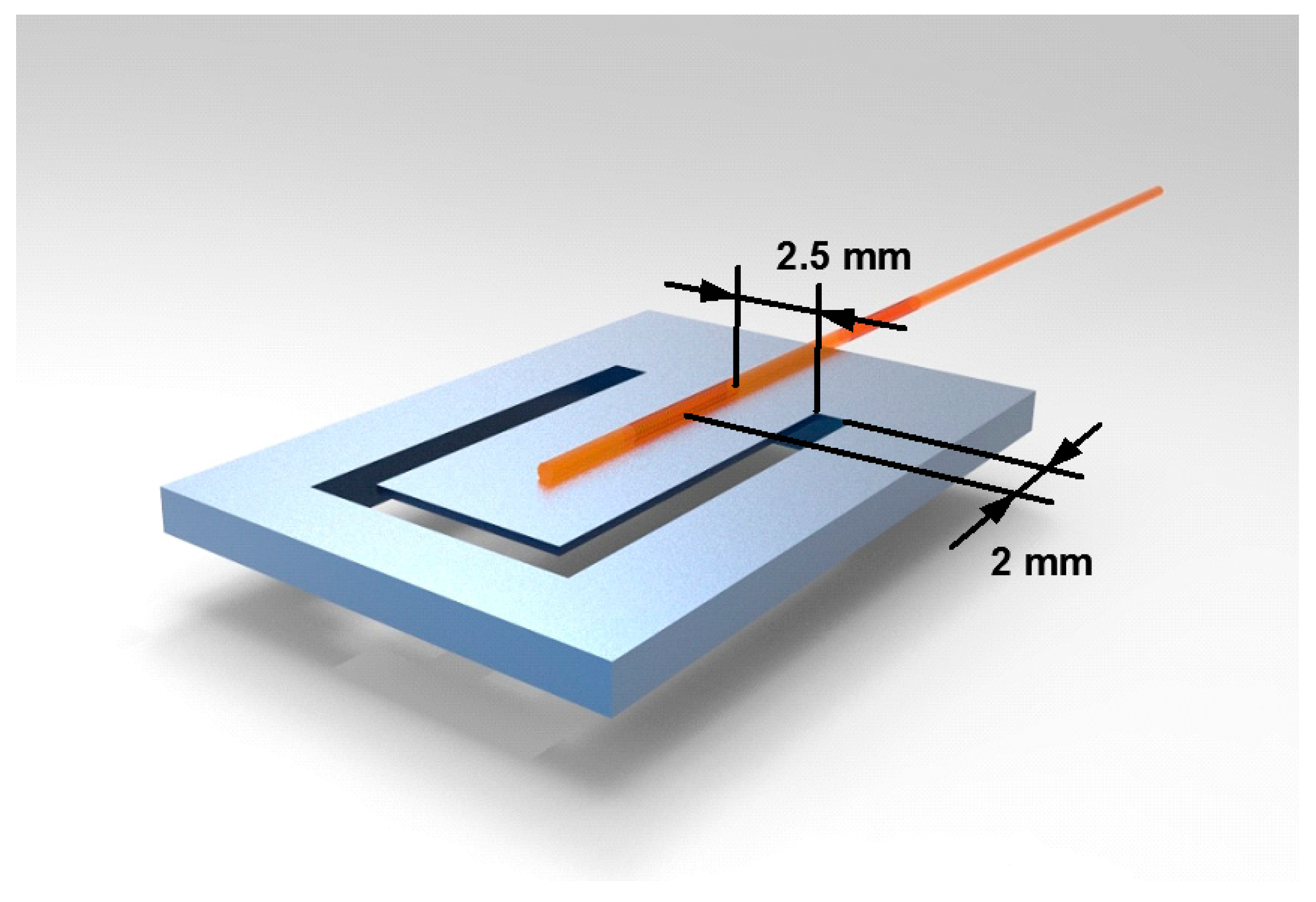
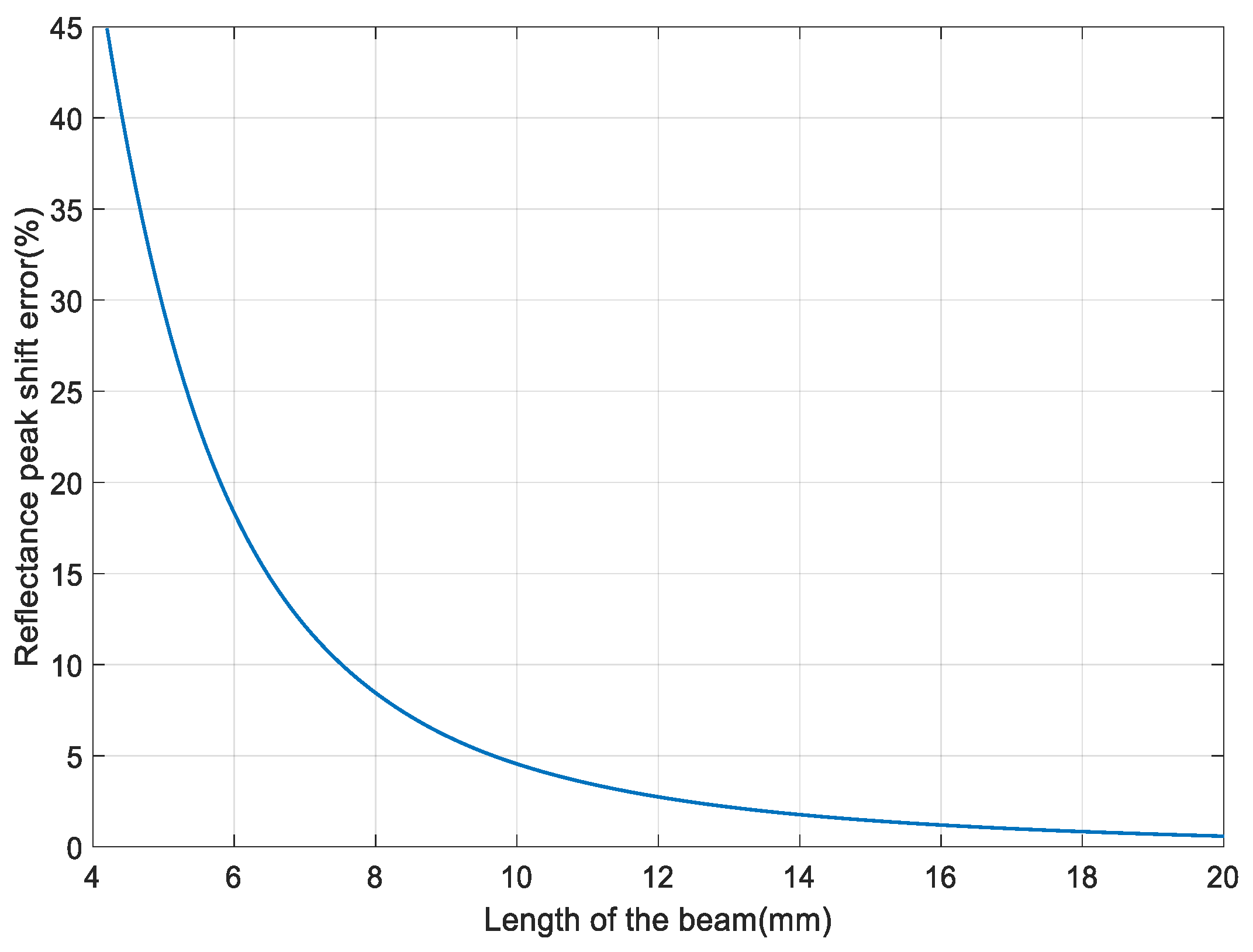
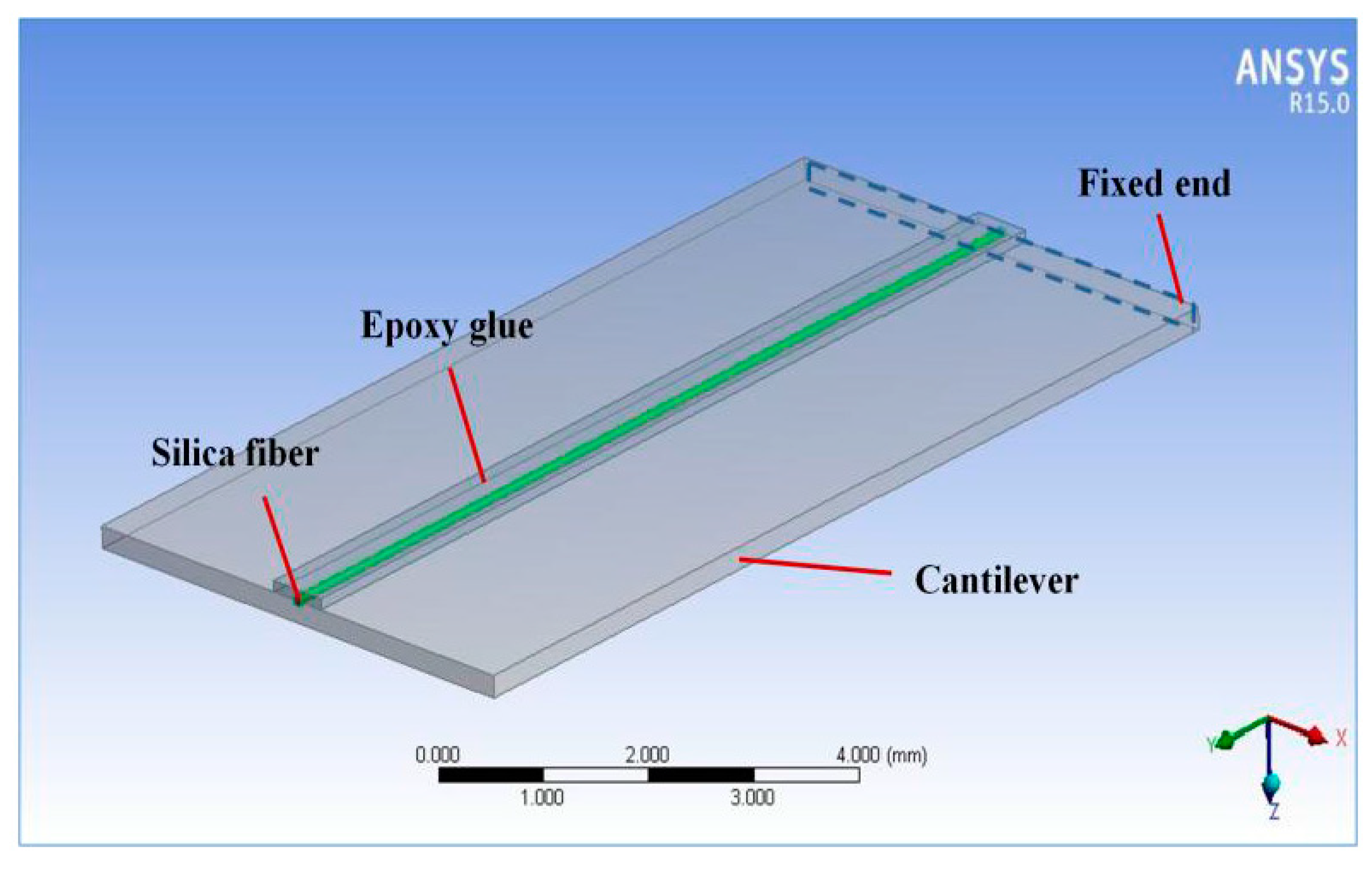
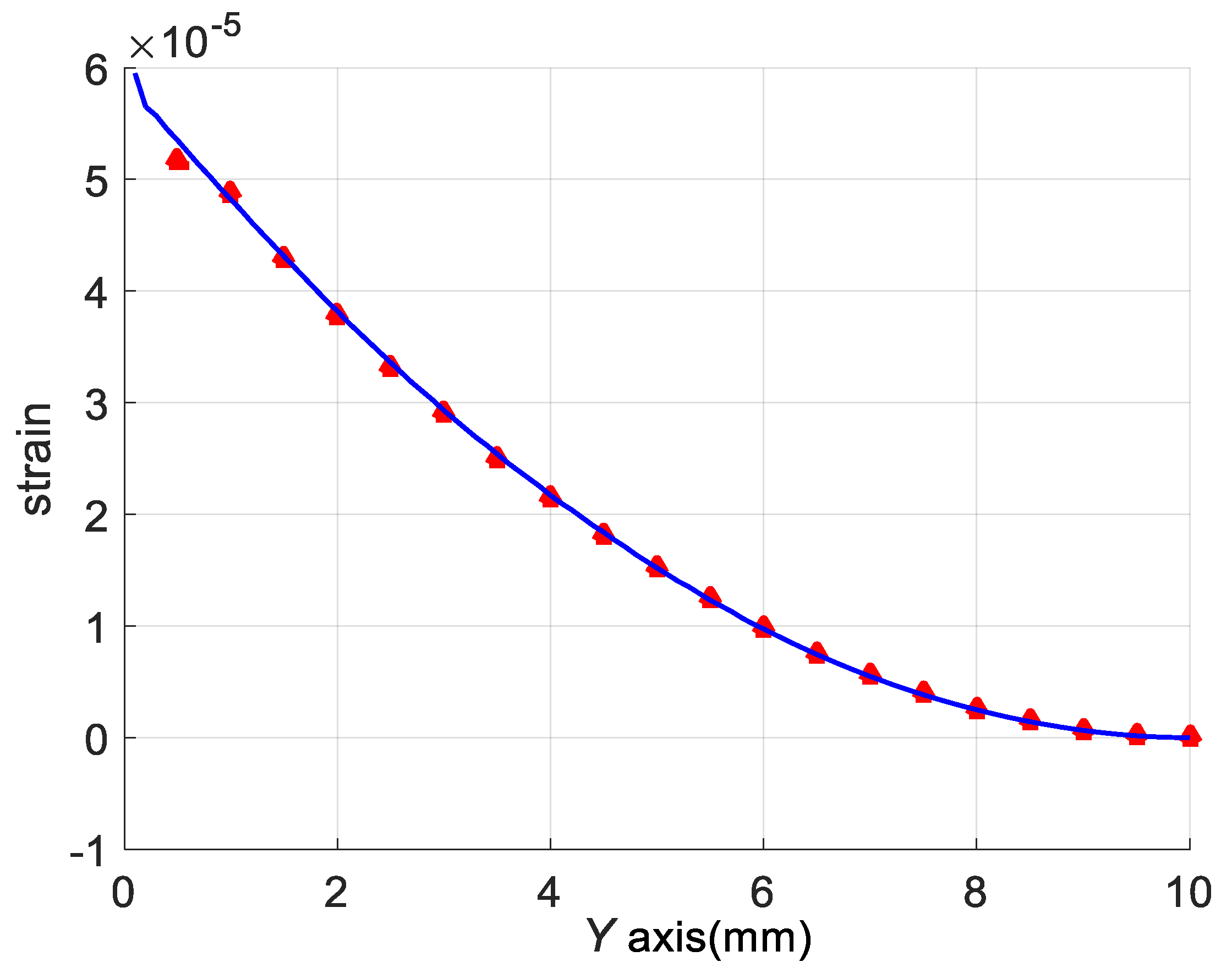
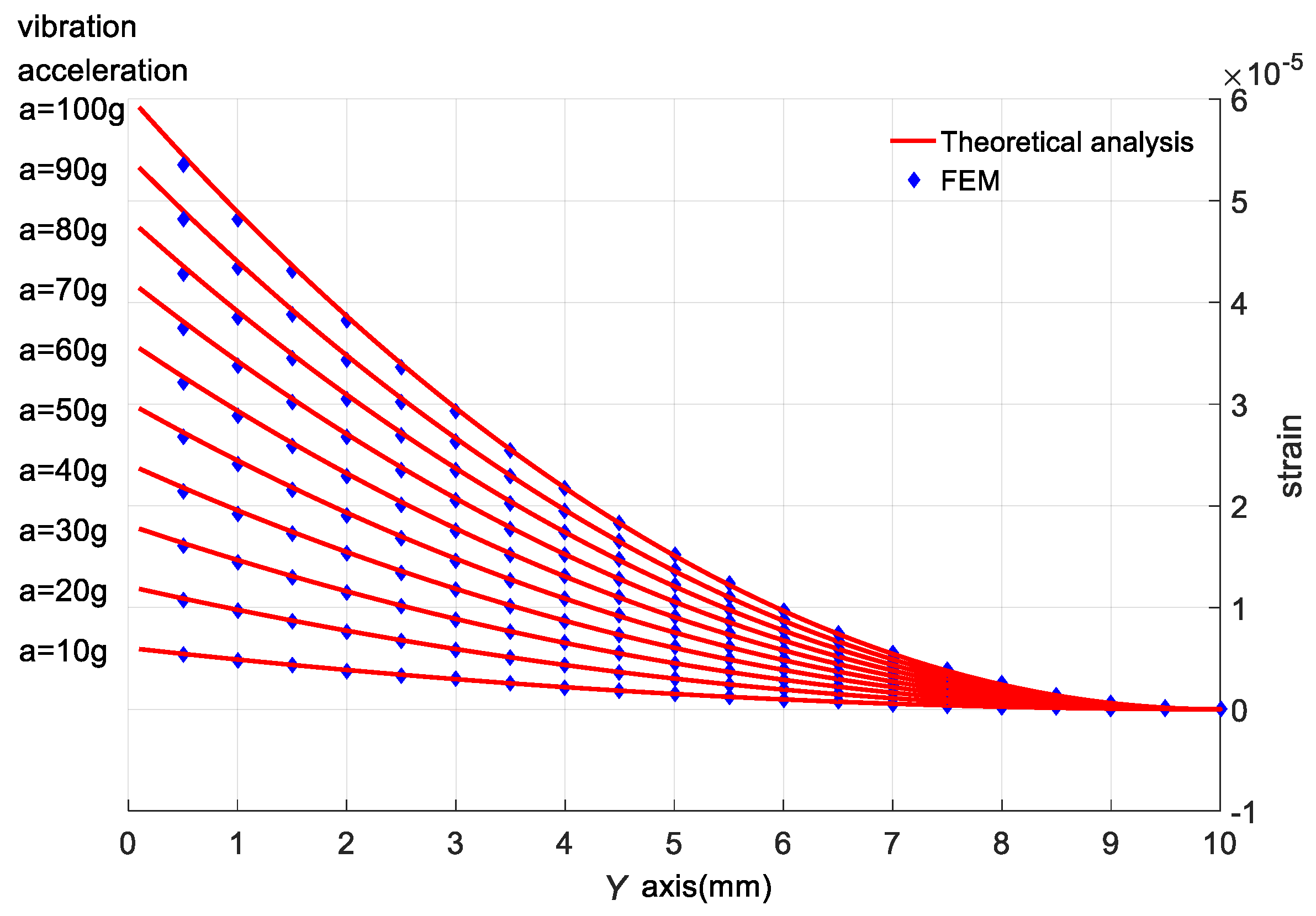
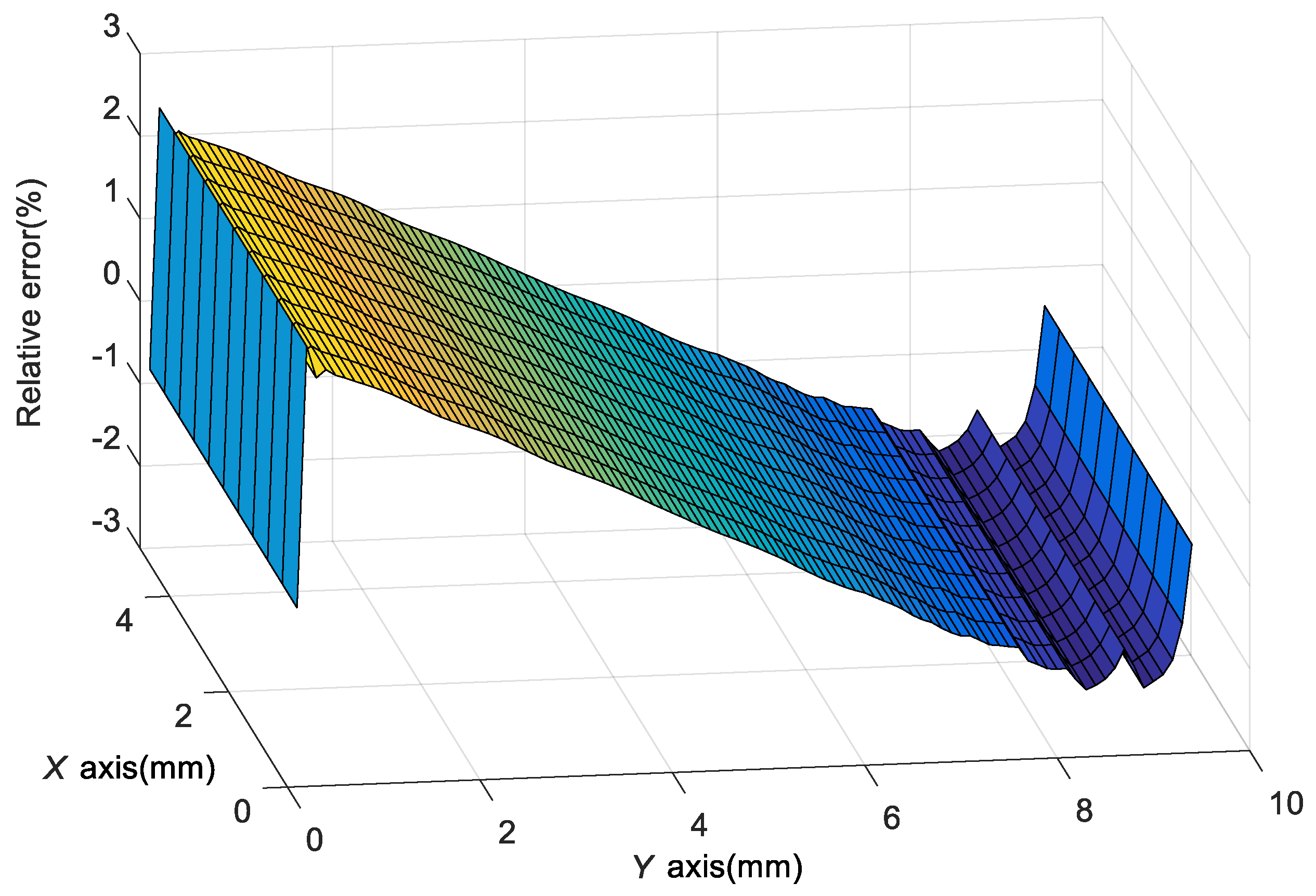

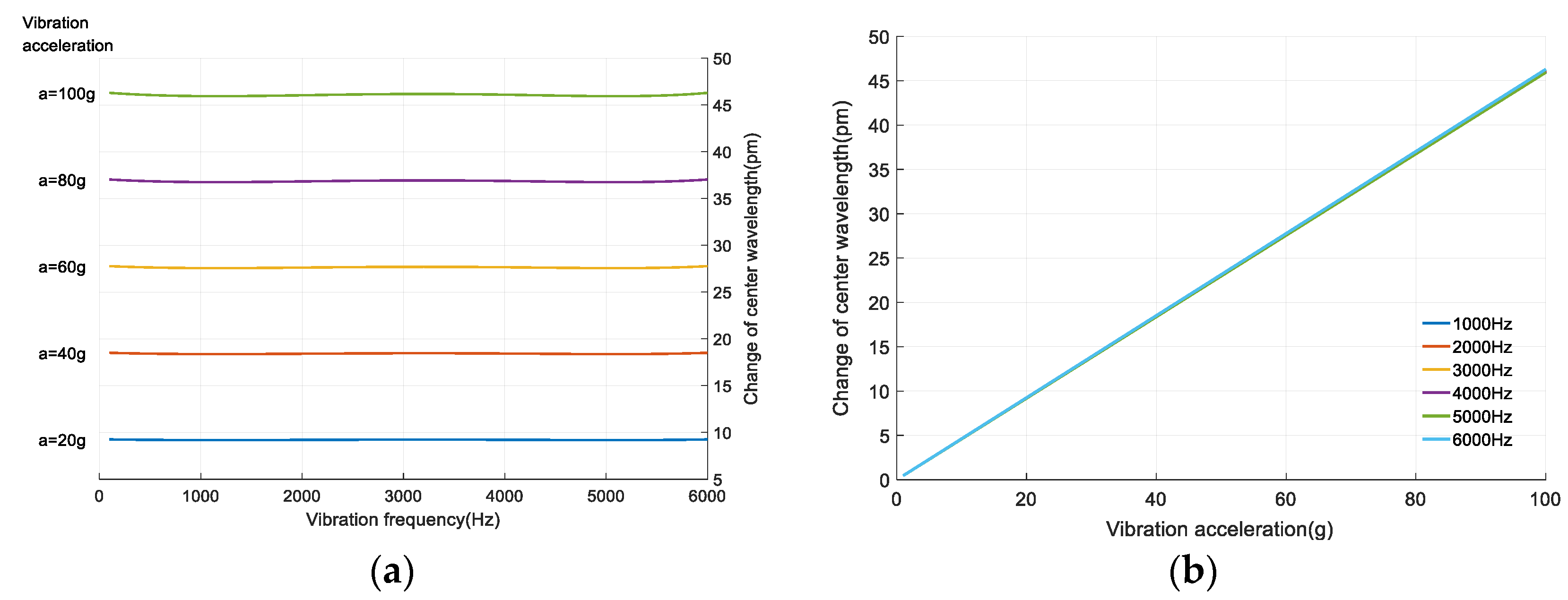
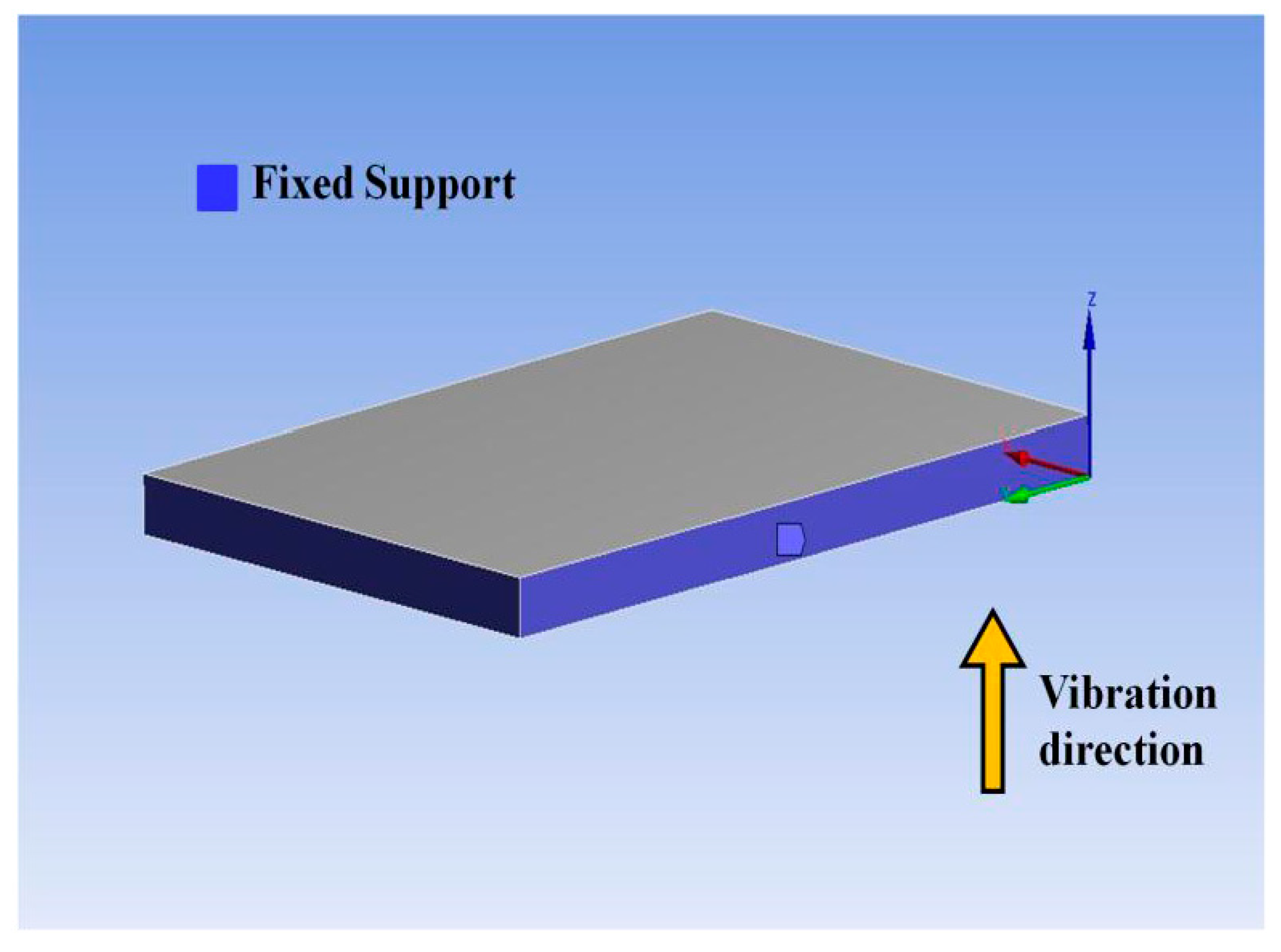
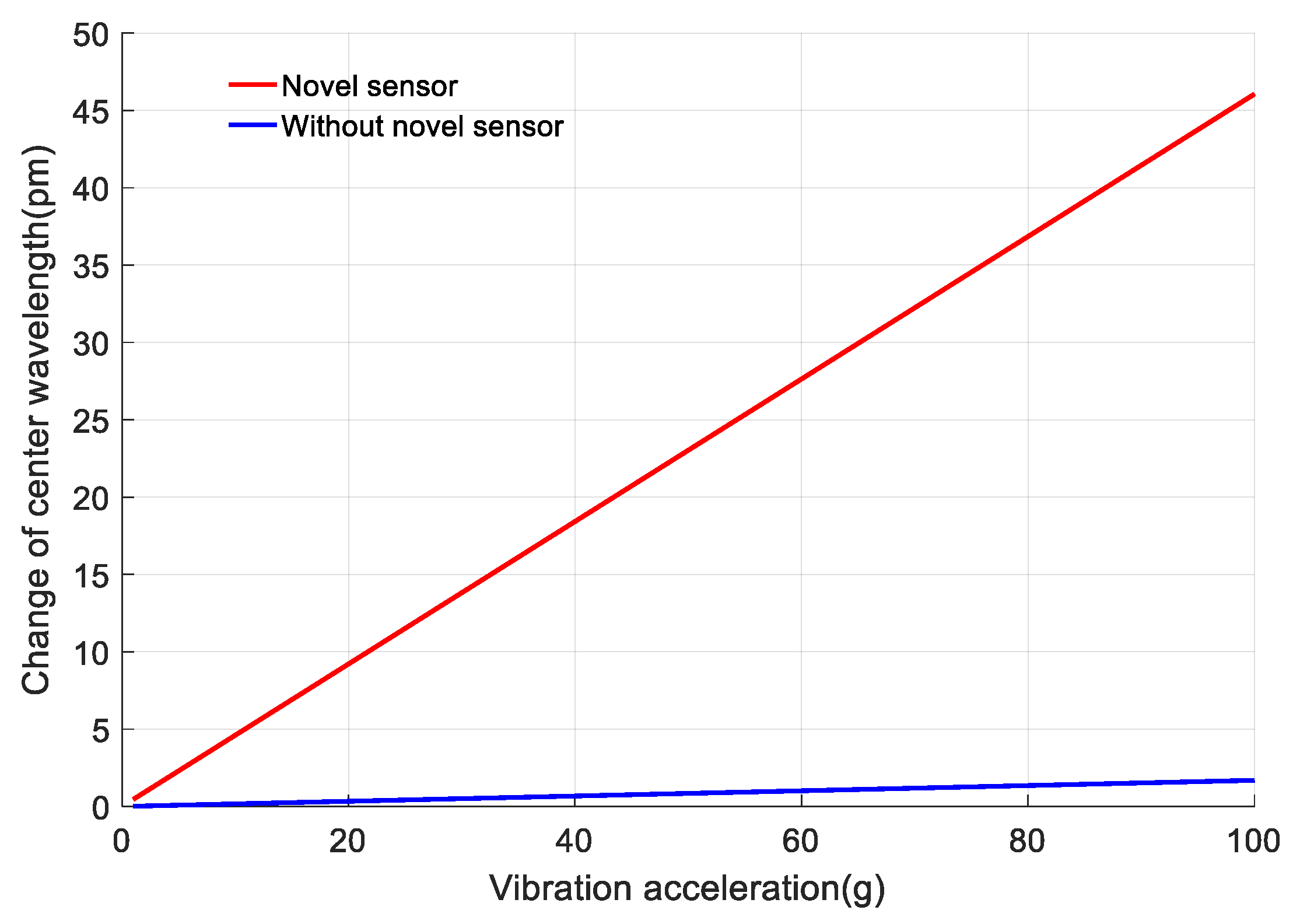
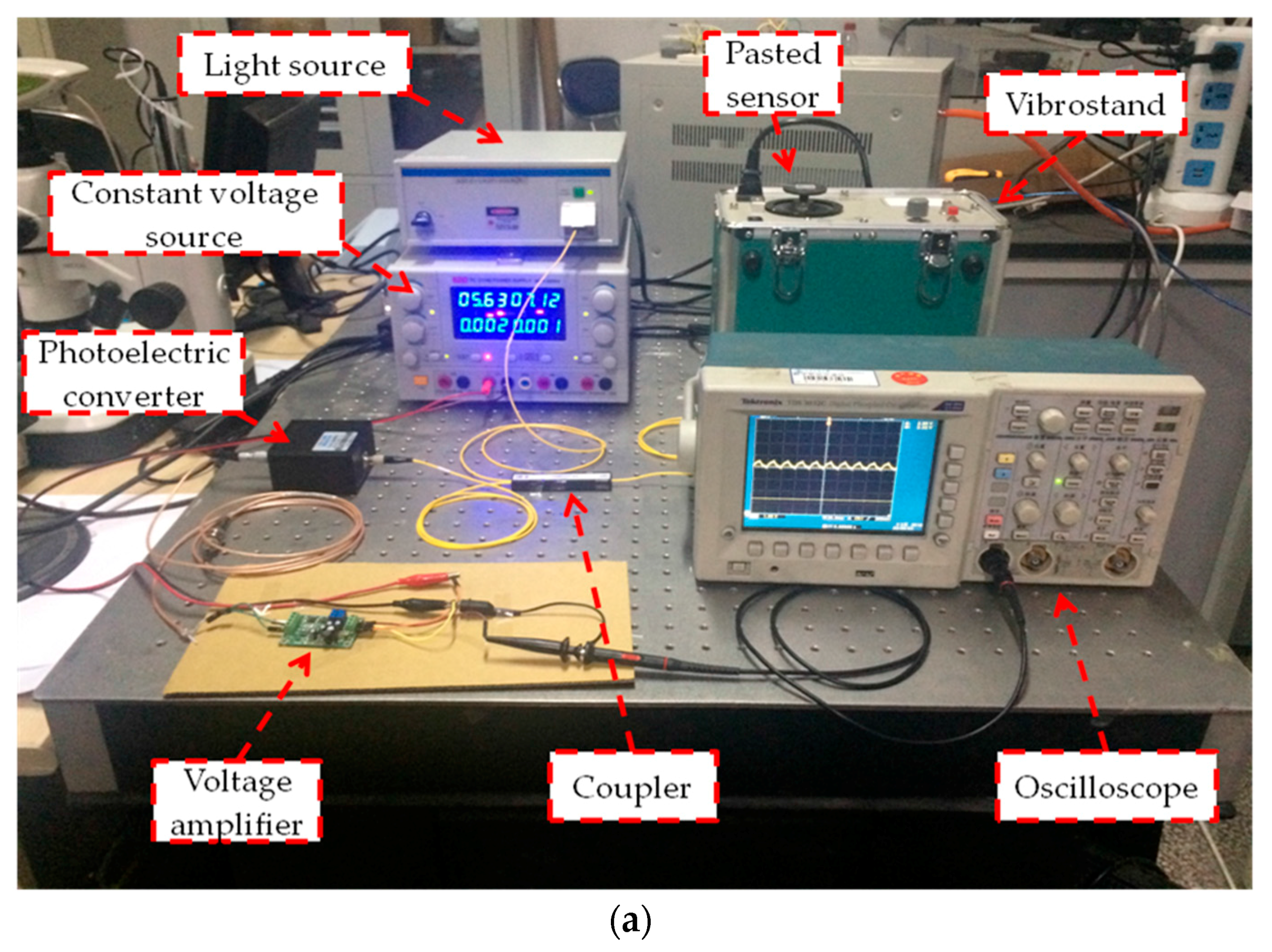
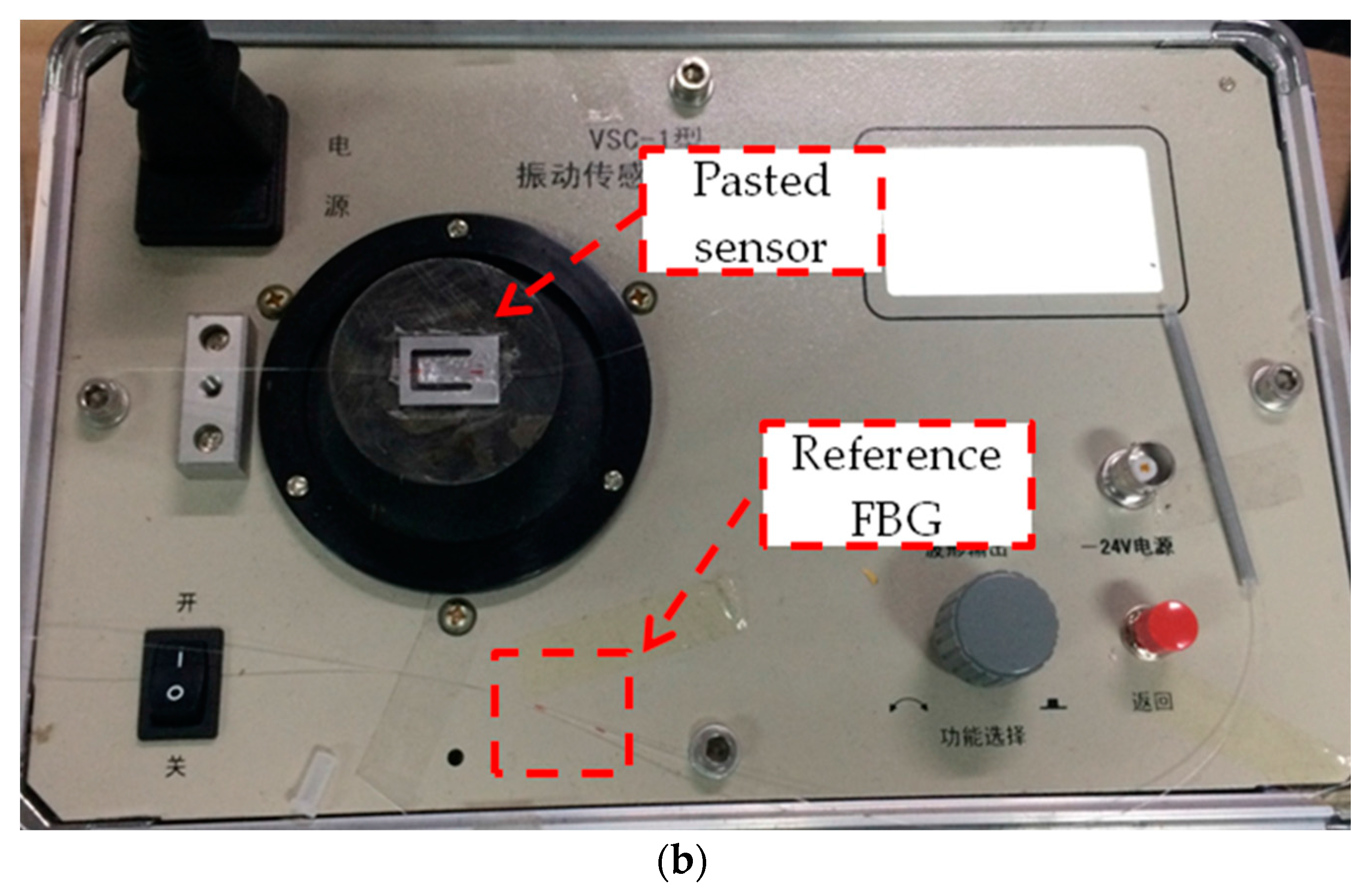
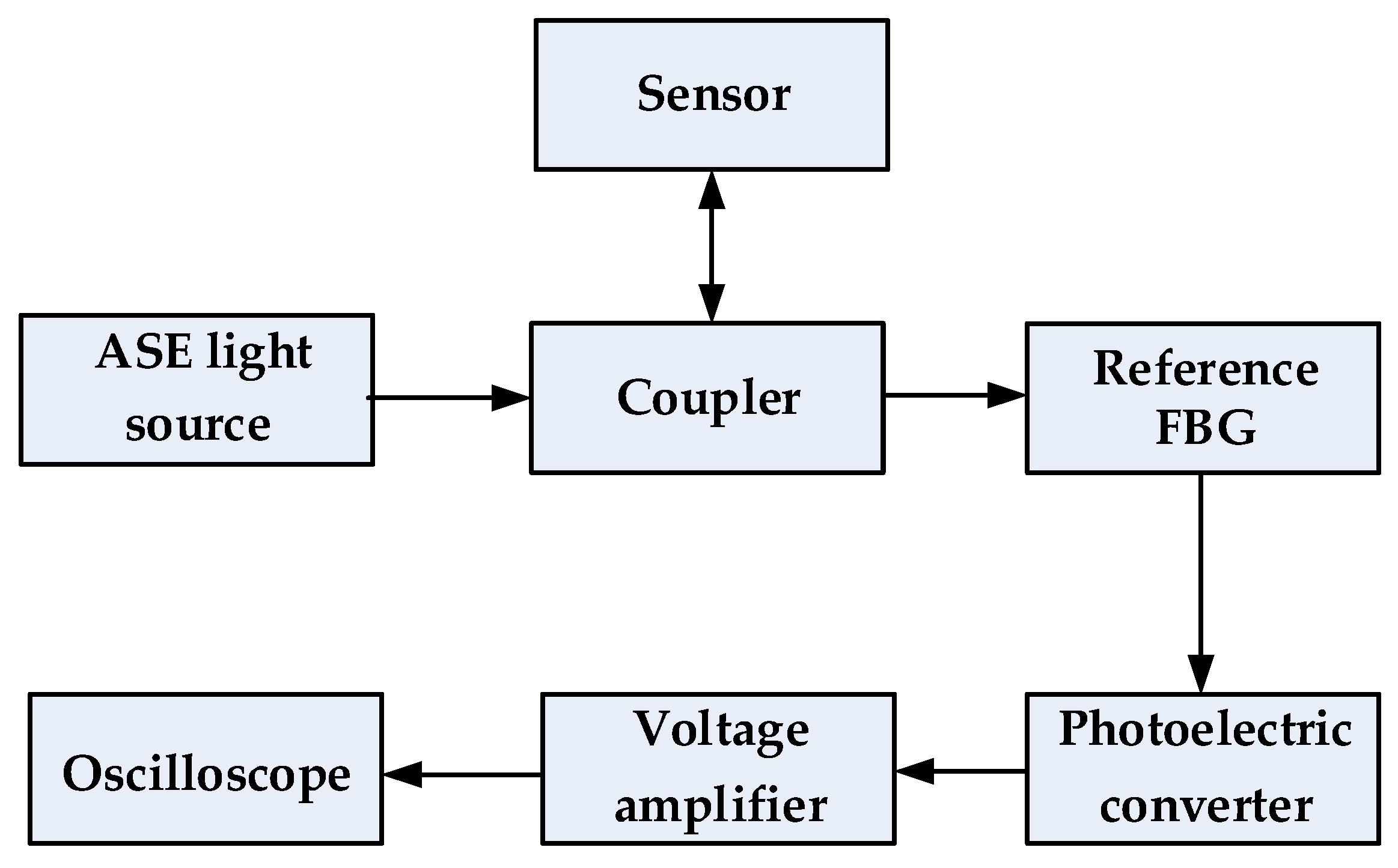

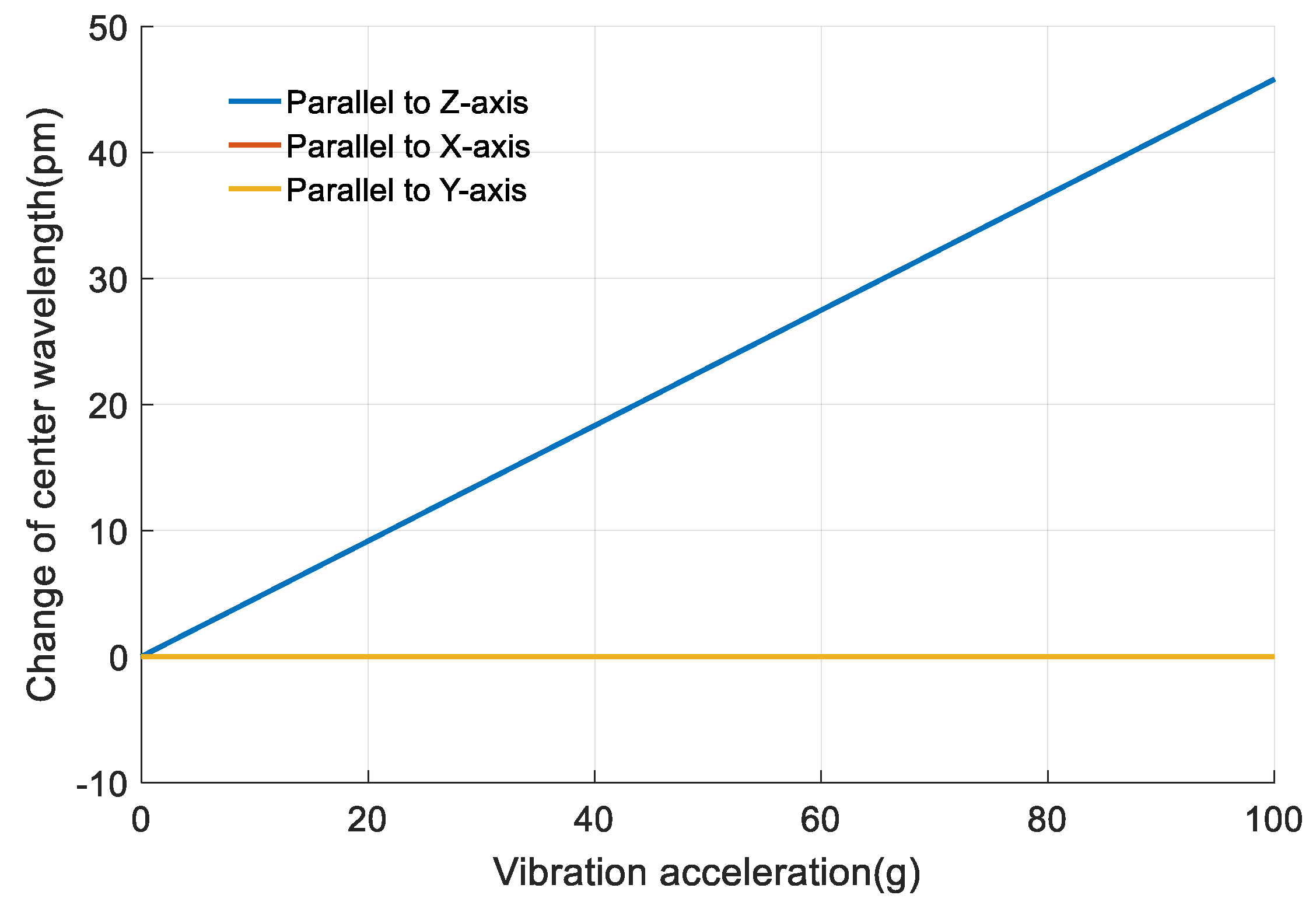
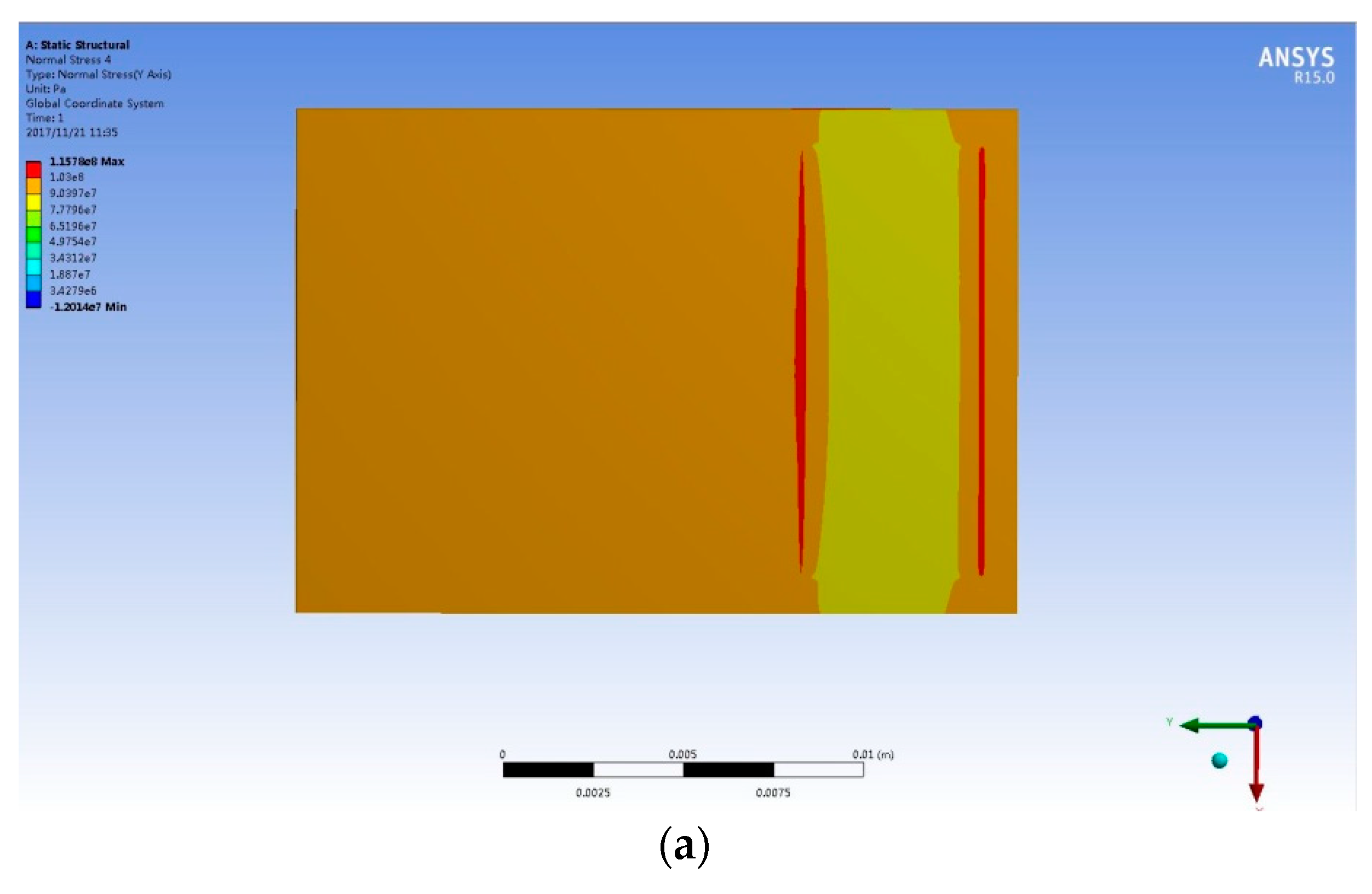


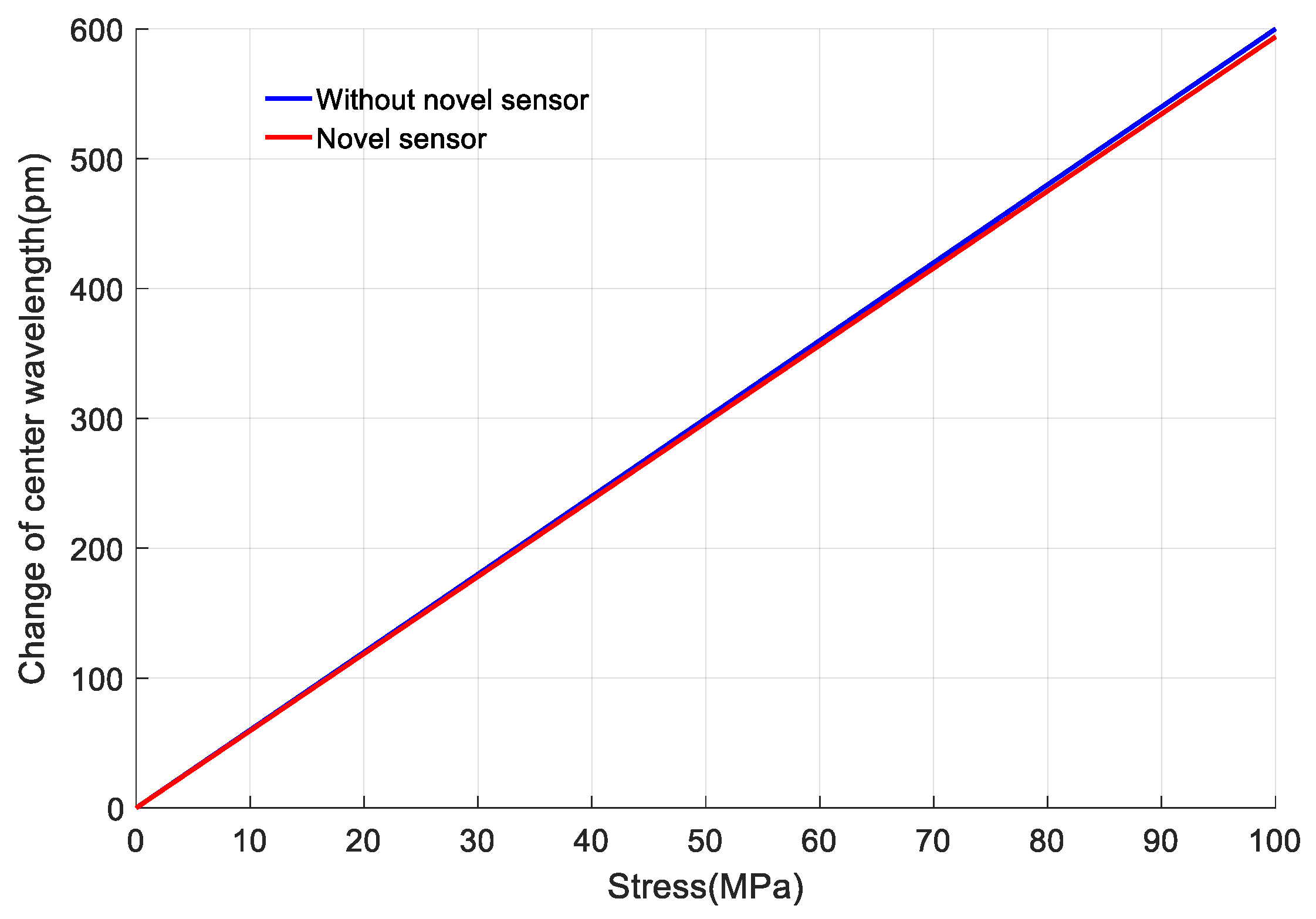

| Geometry Parameters | Value | Material Properties | Value |
|---|---|---|---|
| l (m) | 10 × 10−3 | E (Pa) | 1.93 × 1011 |
| b (m) | 5 × 10−3 | (kg∙m−3) | 7750 |
| h (m) | 0.2 × 10−3 | 0.31 | |
| d (m) | 5 × 10−3 | ||
| L (m) | 18 × 10−3 | ||
| B (m) | 12 × 10−3 | ||
| H (m) | 1 × 10−3 |
© 2018 by the authors. Licensee MDPI, Basel, Switzerland. This article is an open access article distributed under the terms and conditions of the Creative Commons Attribution (CC BY) license (http://creativecommons.org/licenses/by/4.0/).
Share and Cite
Yao, K.; Lin, Q.; Jiang, Z.; Zhao, N.; Tian, B.; Shi, P.; Peng, G.-D. Modeling and Analysis of a Combined Stress-Vibration Fiber Bragg Grating Sensor. Sensors 2018, 18, 743. https://doi.org/10.3390/s18030743
Yao K, Lin Q, Jiang Z, Zhao N, Tian B, Shi P, Peng G-D. Modeling and Analysis of a Combined Stress-Vibration Fiber Bragg Grating Sensor. Sensors. 2018; 18(3):743. https://doi.org/10.3390/s18030743
Chicago/Turabian StyleYao, Kun, Qijing Lin, Zhuangde Jiang, Na Zhao, Bian Tian, Peng Shi, and Gang-Ding Peng. 2018. "Modeling and Analysis of a Combined Stress-Vibration Fiber Bragg Grating Sensor" Sensors 18, no. 3: 743. https://doi.org/10.3390/s18030743





